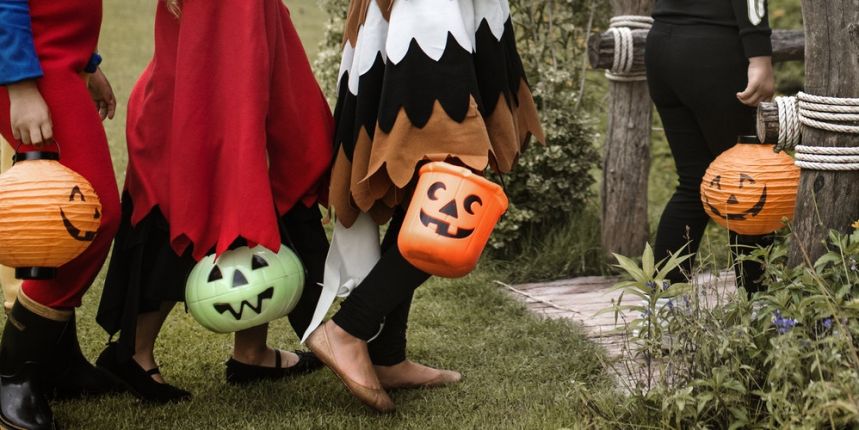As families prepare to shop for Halloween costumes, props and accessories, the National Standards Authority of Ireland (NSAI) is urging parents to look out for particular labels and standards. All Halloween costumes, novelty lights, props and face paint marketed at children are required by law to display the CE Mark. The CE Mark is the manufacturer’s declaration that these products meet EU safety, health and environmental standards.
Parents should also look for the flame-resistant label when shopping for costumes. This indicates the costume will resist burning and should extinguish quickly once removed from the ignition source.
"Don't let Halloween be more frightening this year than it should be. Last year, Revenue, Customs and CCPC officials seized more than 700 Halloween products at Dublin Port for failing to meet the EU safety standards. This is why it is so important for parents to remember to check for the CE Mark and ‘flame resistant’ labels when buying costumes and accessories this Halloween,” said Geraldine Larkin, CEO of NSAI.
“It’s also important that all businesses and traders are vigilant and ensure that the products they’re selling contain the CE Mark. Failure to do so may not only result in financial loss, but more importantly their products may cause physical harm, particularly to children,” she added.
NSAI’s Ten Tips to Stay Safe this Halloween:
- Look for the CE mark on Halloween costumes and accessories
The CE mark is the manufacturer’s declaration that the product complies with national and international safety standards and laws and that the product has undergone safety testing in the design and manufacture process.
If your child is carrying a plastic costume prop or toy, such as a mask or a pitchfork, this should also display the CE Mark. Also, make sure the props and toys your child is using are age appropriate.
- Only buy costumes with a flame-resistant label
As it’s Halloween, your child is more likely to be near candles, lanterns and other decorative flames. Make sure you only buy costumes with a flame-resistant label. Although this label does not mean these items won't catch fire, it does indicate the items will resist burning and should extinguish quickly once removed from the ignition source
- Look for flame resistant materials
Look for costumes made from 100% synthetic fibres like nylon or polyester. Costumes that are made of one single type of material will often catch fire more slowly than those that are made out of lots of different materials.
It is also safer to choose costumes made up of one layer of heavier materials as layers of thinner materials tend to burn much faster because more oxygen can get at the fire.
- Wear clothes under the costume
Ensure children are wearing clothes under their costume, for example, woollen tights or a woollen jumper or jeans. It means if they do catch fire, they will still have a barrier between the costume and their skin.
- Ensure Halloween novelty lights are safe
Halloween novelty lights, similar to Christmas lights, are widely available in shops. However, all electrical products sold in the EU must also comply with safety standards and must carry a CE mark. The mark should be visible on the product itself or on its packaging. If it doesn't have the CE mark, don't buy it. When lighting up pumpkins, opt for battery-operated candles instead of lit ones.
- Take extra care with glitter and capes
In order to protect your children from the risk of burns, we advise you avoid costumes with glitter as it tends to be more flammable. Also, be careful of capes, trains and dangling sleeves, which can drag and graze a naked flame more easily.
- Read the label on face paints
Always look for the CE mark when buying face paints and ensure that the ingredients are clearly displayed on the packaging in English. Additionally, the packaging should display instructions for use, and include the manufacturer’s or importer’s contact details. People should also consider using face paints coloured with natural pigments, if possible.
We recommend you do an allergy test on a small patch of skin before using on your child’s face. No matter how tired they are following a night of trick or treating, remember to remove all costume make up before bed to prevent any possible skin irritation.
- Make sure it fits properly
Make sure that your child’s mask fits properly, is comfortable, and that the eye holes are big enough to see out of and they can breathe comfortably while wearing it.
Do not purchase costumes that are too big, flimsy, or that drag on the ground, as it could be a tripping hazard or fire hazard as it could potentially catch naked flames.
- Stop, Drop and Roll
If the worst does happen and your child comes into contact with a candle or fire, make sure they know to stop, drop to the ground and roll around. Allow the ground to suffocate the flames and not your hand.
- Remember to stay visible
Ensure your child is wearing bright or light coloured clothing where possible, when trick-or-treating. Give them a glow stick to carry or buy reflective tape and attach it to your child’s costume, to ensure they are visible to motorists.
For more Halloween safety tips, visit www.NSAI.ie



